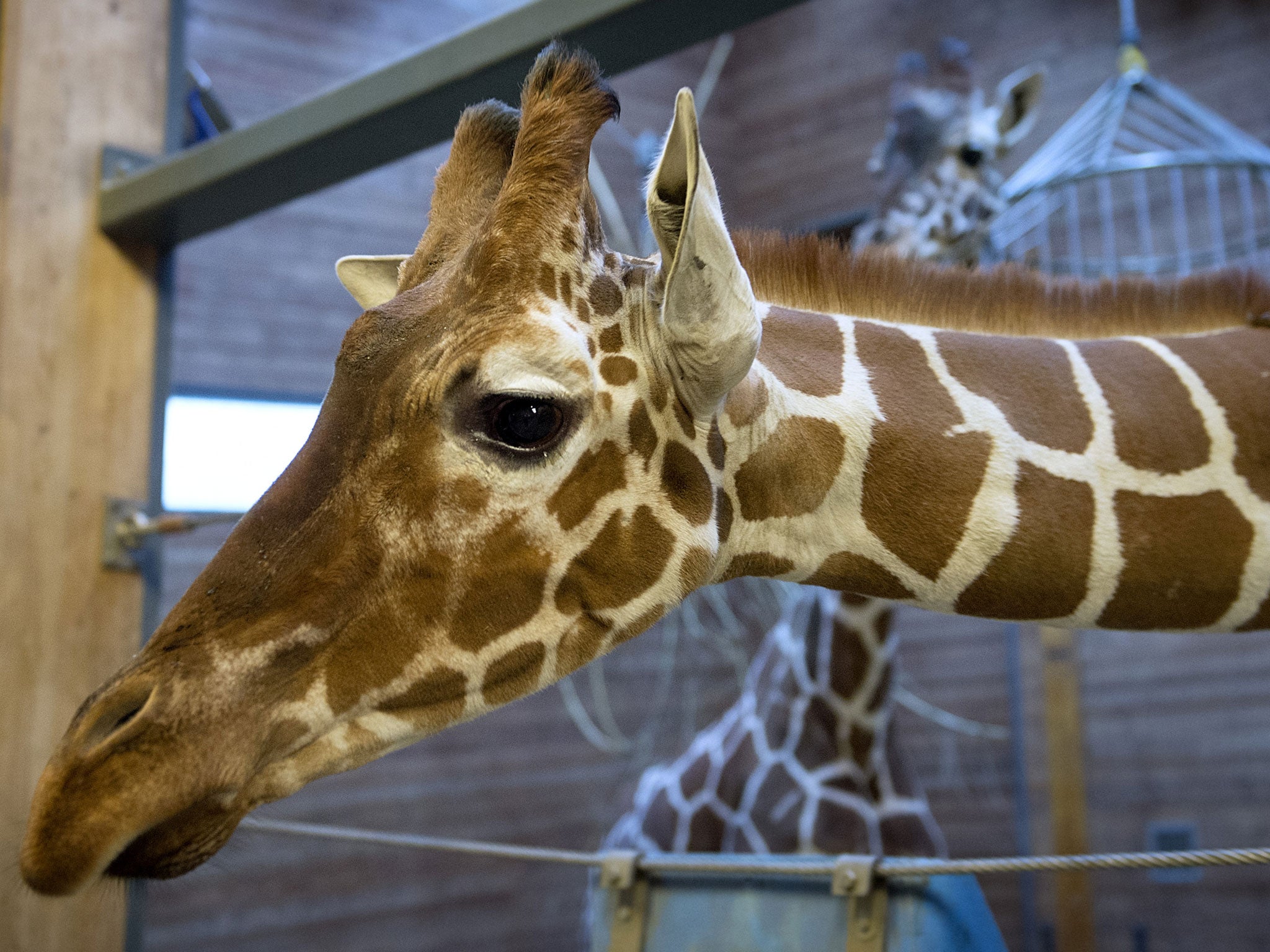Marius the giraffe: second healthy animal in Denmark named Marius could soon be dead
Marius at Jyllands Park Zoo in Western Denmark may suffer a similar fate as late his namesake in Copenhagen

Your support helps us to tell the story
From reproductive rights to climate change to Big Tech, The Independent is on the ground when the story is developing. Whether it's investigating the financials of Elon Musk's pro-Trump PAC or producing our latest documentary, 'The A Word', which shines a light on the American women fighting for reproductive rights, we know how important it is to parse out the facts from the messaging.
At such a critical moment in US history, we need reporters on the ground. Your donation allows us to keep sending journalists to speak to both sides of the story.
The Independent is trusted by Americans across the entire political spectrum. And unlike many other quality news outlets, we choose not to lock Americans out of our reporting and analysis with paywalls. We believe quality journalism should be available to everyone, paid for by those who can afford it.
Your support makes all the difference.Days after a Copenhagen Zoo made the controversial decision to euthanise a healthy giraffe named Marius, another Danish zoo has said it may do the same to its own giraffe also called Marius, it has been reported.
Since ‘the original’ Marius was dissected and fed to lions as visitors watched at the zoo in the Danish capital, zoo staff have received death threats by phone and email.
Undeterred, Jyllands Park Zoo in Western Denmark announced that it may have to make a similar decision with its own Marius.
The decision follows Jyllands Park Zoo being approved to take part in the European breeding programme, the Guardian reported.
The zoo claims that Marius - one of its two male giraffes - will have to be culled if it can acquire a female.
As was the case with Copenhagen Zoo’s Marius, it is unlikely the giraffe can be re-homed because of its genetic makeup.
Both giraffes are victim to a practice familiar to geneticists where healthy animals are killed if they do not fit into conservation practices in zoos.
Problems arise when experts worry animals are too similar, or too different, to others in breeding programmes to allow them to mate.
Janni Løjtved Poulsen, zookeeper at Jyllands Park, told the Guardian it was not clear when the park would acquire a female giraffe and that the decision on Marius's future would be taken by the breeding programme co-ordinator.
“If we are told we have to euthanise [Marius] we would of course do that,” said Poulsen.
She added the park managers would not to be swayed by the wave of protests, including a 27,000 signature strong petition, that followed the killing of 18-month-old Marius at Copenhagen zoo.
“It doesn't affect us in any way. We are completely behind Copenhagen and would have done the same,” said Poulsen, adding the zoo had not decided if it would also stage a public dissection.
“We thought it was amusing that there was another Marius among the giraffes when there aren't that many giraffes in Denmark overall,” she said of the animal named after a former Jyllands Park vet.
Copenhagen zoo's scientific director, Bengt Holst, stressed on Denmark's Radio that to avoid personification, their animals were not officially named.
"The zoo keepers sometimes call the animals names, and then our guests have heard the name Marius," Holst told Denmark's Radio, adding: "But in no way is it an official name it has been given."
The death of the first Marius comes after two leopard cubs were culled at Copenhagen Zoo in 2012, while four years before that, three Siberian tigers were put to sleep in Germany.
Join our commenting forum
Join thought-provoking conversations, follow other Independent readers and see their replies
Comments